Femia > Health Library > Getting Pregnant > Trying to conceive > 3 DPO: What to expect, and how to tell if you’re pregnant
3 DPO: What to expect, and how to tell if you’re pregnant
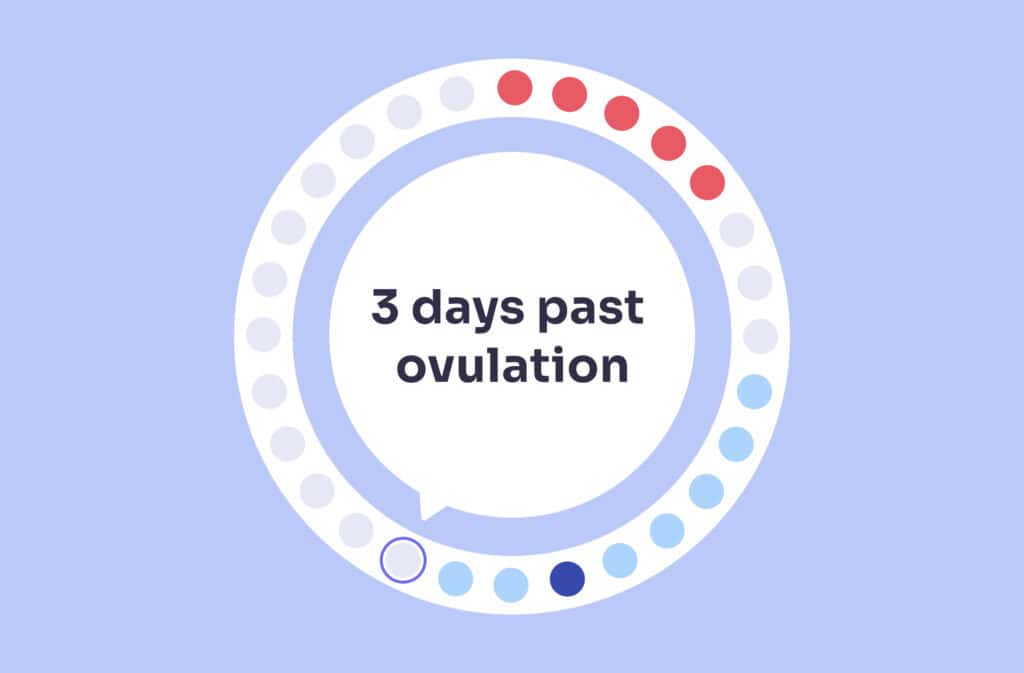
- Updated Feb 27, 2025
- Published
CRAFTED BY HUMAN
Crafted by human At Femia, we provide accurate and up-to-date information at every stage of your journey, from trying to conceive, pregnancy and postnatal support. All content is created by a real person based on in-depth research and own professional experience. Femia ensures that you will receive expert advice, strict accuracy and a personalized approach from our authors/medical experts. Learn more about our editorial policy.
FACT CHECKED
Fact checked At Femia Health, we maintain the highest standards of editorial excellence in delivering content focused on helping you conceive, guiding you through pregnancy, and supporting you postpartum. Explore our content review principles to learn how we ensure the accuracy and quality of our health and lifestyle tips for every stage of your journey.
At 3 DPO (3 days post ovulation):
- The fertilized egg (if conception occurred) is still traveling through the fallopian tube. Implantation hasn’t happened yet, so pregnancy hasn’t technically begun.
- Hormone levels continue to change, with progesterone and estrogen rising.
- Common symptoms like mood swings, breast tenderness, and mild cramping may occur due to hormonal changes.
- It’s still too early for definitive pregnancy symptoms or accurate test results.
If you’re trying to conceive (TTC), the days that follow ovulation might be quite complicated. These days make up the luteal phase of the cycle. It typically lasts for 14 days. Throughout this time, your egg’s fertility window closes, it travels through the fallopian tube, and hopefully, implants.
The main reason why this time might feel hard for TTC women is the long wait. The luteal phase means two long weeks of hoping and guessing whether you will miss your next period. So if you want to know everything about the changes, symptoms, and possible early pregnancy signs during different days after ovulation, it’s quite natural.
To satisfy your need, we’ve prepared a series of articles, covering each DPO in detail. In this guide, we’re going to focus on 3 DPO and what’s happening in your body during this day.
➡️ Read other Femia guides in this series:
- 1 DPO: What to expect, and how to tell if you’re pregnant
- 2 DPO: What to expect, and how to tell if you’re pregnant
- 4 DPO: What to expect, and how to tell if you’re pregnant
- 5 DPO: What to expect, and how to tell if you’re pregnant
- 6 DPO: What to expect, and how to tell if you’re pregnant
- 7 DPO: What to expect, and how to tell if you’re pregnant
- 8 DPO: What to expect, and how to tell if you’re pregnant
- 9 DPO: What to expect, and how to tell if you’re pregnant
- 10 DPO: What to expect, and how to tell if you’re pregnant
- 11 DPO: What to expect, and how to tell if you’re pregnant
- 12 DPO: What to expect, and how to tell if you’re pregnant
- 13 DPO: What to expect, and how to tell if you’re pregnant
- 14 DPO: What to expect, and how to tell if you’re pregnant
- 15 DPO: What to expect, and how to tell if you’re pregnant
- 16 DPO: What to expect, and how to tell if you’re pregnant
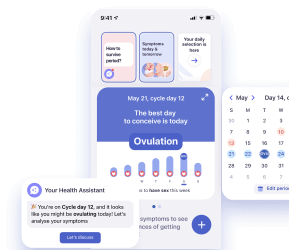
What is happening at 3DPO inside your body?
3 DPO is one of the first days of the TWW—the two-week wait that marks the time between the ovulation and the next period. In the TTC community, this is the time of long waiting, high hopes, and quite a lot of worries because TWW is the time when you hopefully get pregnant and miss your next period.
By the third day after ovulation, your fertility window is closed, meaning that you can’t get pregnant anymore but can have the released egg either reabsorbed in your body or fertilized and turned into a zygote. If fertilization takes place, at 3 DPO, your egg will be still inside the fallopian tube, on its way to the uterus to implant and settle for your future pregnancy.
Apart from the eggs’ movement, some changes happen in your hormonal system. After the ovulation is over, you are entering the luteal phase of your menstrual cycle. This part of your cycle is meant to prepare you for potential pregnancy, which is why the levels of progesterone and estrogen increase during this time. These hormones affect you both mentally and physically, causing the following changes:
- Your emotions may get less stable and you might experience signs of anxiety, depression, and overall mood swings.
- Your uterine lining will start thickening to create the perfect environment for implantation.
- Your cervical mucus will start thickening as well to keep harmful bacteria out of your uterus, which means that you may notice your 3DPO discharge to be thicker.
👉Find out more: Pink discharge: Causes and what you can do about it
Common 3 DPO symptoms
If you are TTC, by this time you are likely itching to learn about 3 DPO symptoms and success stories that will comfort and support you during the so long two-week wait. You might be already tracking every ache, tingle, and other tiny changes. And you might as well get this gut feeling that you’re already close to your goal.
Although 3 days after ovulation is still too early to notice tangible pregnancy signs, this doesn’t mean that you can’t experience any symptoms. Rising progesterone and estrogen can have multiple effects on your body.
The following 3 DPO symptoms are considered normal and common:
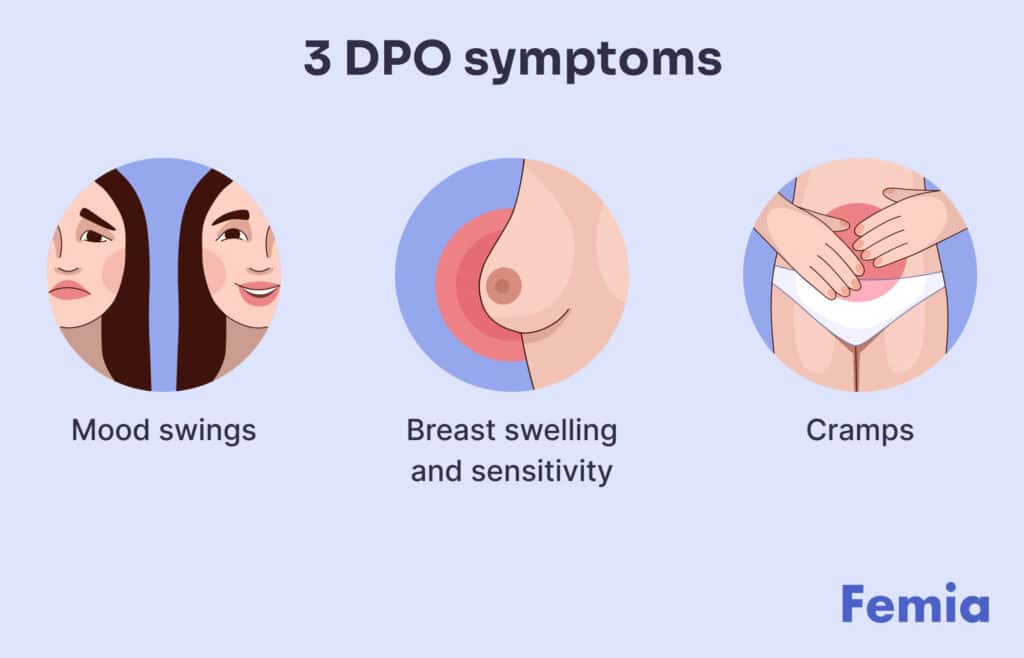
3 DPO symptoms if pregnant
Every pregnancy is different, meaning that every female may (or may not) experience early signs differently. If you’re on your 3rd day after conception, the first common signs that might appear are swollen and tender breasts, cramps, light spotting, etc.
You may already notice these symptoms today. However, they can be hard to attribute to pregnancy alone. All these symptoms are quite similar to those of post-ovulation or impending-period ones. Remember, that 3 DPO is just the beginning of your journey, when the fertilized egg has typically not even implanted yet, which usually happens at 6-12 DPO.
Is it too early to take a 3DPO pregnancy test?
Whether we’re talking about at-home tests or high-accuracy tests used by doctors, they all have the same mechanics of work- they detect the human chorionic gonadotropin (hCG), which is a hormone produced by syncytiotrophoblastic cells of the placenta when you’re pregnant.
The benefit of this form of testing is that it enables early pregnancy detection. Typically, hCG starts producing as soon as around 6 days after fertilization. However, most specialists recommend doing your tests starting from the first day of a missed period for the most accurate results. At this time, the level of hCG should be sufficient enough to confirm or refute pregnancy with a high accuracy. Taking a 3DPO pregnancy test might be too early to receive an accurate result.
👉Find out more: How long after sex does implantation occur: Understanding the timeline
Tips for staying healthy and positive at 3 DPO
Although it’s still too early to identify the specific 3 DPO symptoms leading to BFP (big fat positive on your pregnancy test), we know that you must be looking forward to knowing that you’re pregnant. These high hopes and pregnancy-related anxiety are what make the two-week wait so annoying and lasting forever.
What can you do to make the TWW less stressful? There are a few tips that might help.
Diet
When your hormonal balance changes and hopefully, the fertilized egg travels to the uterus to implant, your body will likely need more energy to support these processes. Due to this reason, the dietary energy intake tends to be higher during the luteal phase of your cycle.
To stay healthy and create the optimal environment for pregnancy, consider following these dietary tips:
- Create a balanced diet that contains a sufficient amount of grains, vegetables, fruits, dairy, and protein foods.
- Start avoiding foods that aren’t recommended during pregnancy in advance. These include raw and undercooked products that might be infected.
- Stick to healthy hydration patterns to improve your overall health and support your fertility.
- Integrate additional supplements, such as folic acid.
- Steer clear of alcohol and control your caffeine intake.
Physical activity
Moderate but regular physical activity is considered an important element of female fertility and healthy pregnancy. Apart from helping you maintain optimal weight and stay generally healthy, exercising can help you get stronger and prepare for future pregnancy and labor better.
During the luteal phase, low-impact exercising can also help you manage common symptoms. Namely, it can help you reduce cramping, improve sleep quality, boost energy levels, help manage your mood better, etc.
Consider continuing (or engaging into) mild physical activity at 3 DPO. For example, you can try walking, swimming, yoga, pilates, and other activities that feel right for you.
Mental wellness
Since post-ovulation symptoms are often mild and early pregnancy signs are too early to show at 3 DPO, probably the hardest part of this time is the emotional tension. Waiting another two weeks to learn whether you’re pregnant can feel like forever, which might affect your positivity. Thus, it’s important to find solutions that will help you stay positive and stabilize your mental health.
Some options you can try are:
- Journaling;
- Breathing practices;
- Meditation;
- Mindfulness.
A big part of your mental well-being also depends on your external support system. It’s important to stay open and communicate with your partner, friends, or family about your feelings and needs during the TWW. This can help you feel empowered during this stage.

Cycle tracking
Tracking your periods, ovulation, and every DPO is a good way to understand your cycle better and get prepared for internal changes that might be happening inside your body at 3 DPO and beyond. It’s also a good way to detect your fertility window and increase the likelihood of pregnancy.
Lastly, tracking your cycle and symptoms creates a greater sense of control. Such rituals can make you feel more empowered and help reduce anxiety. Besides, it might help you notice any unusual symptoms or cycle irregularities that need to be addressed together with a doctor for a healthy pregnancy.
Just try not to get too focused on your DPOs and symptoms so as not to create excessive stress.
➡️ Read other Femia guides in this series:
- 1 DPO: What to expect, and how to tell if you’re pregnant
- 2 DPO: What to expect, and how to tell if you’re pregnant
- 4 DPO: What to expect, and how to tell if you’re pregnant
- 5 DPO: What to expect, and how to tell if you’re pregnant
- 6 DPO: What to expect, and how to tell if you’re pregnant
- 7 DPO: What to expect, and how to tell if you’re pregnant
- 8 DPO: What to expect, and how to tell if you’re pregnant
- 9 DPO: What to expect, and how to tell if you’re pregnant
- 10 DPO: What to expect, and how to tell if you’re pregnant
- 11 DPO: What to expect, and how to tell if you’re pregnant
- 12 DPO: What to expect, and how to tell if you’re pregnant
- 13 DPO: What to expect, and how to tell if you’re pregnant
- 14 DPO: What to expect, and how to tell if you’re pregnant
- 15 DPO: What to expect, and how to tell if you’re pregnant
- 16 DPO: What to expect, and how to tell if you’re pregnant
Questions from the Femia community
Where is the egg at 3DPO?
The egg released during the ovulation remains available for fertilization for 12-24 hours on average (which spans the ovulation day and sometimes a part of 1 DPO). Then, within about 30-48 hours, the egg travels down the fallopian tube toward the uterus. At 3 DPO, a non-fertilized egg typically gets reabsorbed into your body, and if it’s fertilized, it continues moving toward the uterus.
If I feel cramping 3 days after ovulation, could I be pregnant?
Yes and no. Mild cramping is a common symptom of the first days after ovulation and it’s also a commonly known early pregnancy sign. Yet, during the early days of your luteal phase, the symptoms you might experience are mostly associated with changes in hormonal levels and ovulation. Possibly, you might be experiencing cramps because of the follicle rupture or increasing progesterone. However, this also doesn’t mean that you aren’t pregnant. It’s just too early to tell for sure.
Can I tell I’m pregnant by vaginal discharge?
Changes in vaginal discharge are among early pregnancy signs many women are looking out for when trying to conceive. According to common knowledge, if you notice more vaginal discharge than usual and it’s either white or clear, it might be an indication of pregnancy. However, you shouldn’t focus too much attention on this at 3 DPO. The thing is that changes in discharge are triggered by pregnancy hormones (progesterone and estrogen), which are increasing after ovulation. That is, there might not be a significant difference in your 3DPO discharge if pregnant or not pregnant.
The bottom line
At 3 DPO, you are still at the start of your luteal phase and your egg still travels the fallopian tube toward the uterus to implant. If it’s not fertilized, it will get reabsorbed. However, if it’s fertilized during the previous ovulation, this might be the beginning of your pregnancy journey.
Although the egg might already be fertilized and formed into a zygote, the pregnancy hasn’t started yet, until the egg is implanted into the uterus wall. Due to this reason, seeing early pregnancy signs at this point is rather unlikely, and taking a pregnancy test is too early to get an accurate result.
Nevertheless, if you’re trying to conceive, it can be a good idea to understand and track your symptoms during every day post ovulation. This can help you gain a better understanding of your fertility and what to expect at different phases of the menstrual cycle. It can also help you answer common questions like “If there’s 3 DPO cramping, am I pregnant?” or “How do I manage 3 DPO symptoms if I face them?”
Consider reading other guides in our DPO series to get through your two-week wait day-by-day and receive answers to your questions.
➡️ Read other Femia guides in this series:
References
- “Luteal Phase.” Cleveland Clinic, 4, Nov. 2022. https://my.clevelandclinic.org/health/articles/24417-luteal-phase.
- Elizabeth A. Grill. “Surviving the Two-Week Wait.” Resolve, The National Infertility Association. https://resolve.org/get-help/helpful-resources-and-advice/managing-infertility-stress/surviving-the-two-week-wait/.
- Inger Sundström-Poromaa, Erika Comasco, Rachael Sumner, Eileen Luders. “Progesterone – Friend or foe?” Frontiers in Neuroendocrinology, Volume 59, ScienceDirect, 2020. https://www.sciencedirect.com/science/article/pii/S0091302220300479.
- Teresa Lanza di Scalea, Teri Pearlstein. “Premenstrual Dysphoric Disorder.” Psychiatric Clinics of North America, Volume 40, ScienceDirect, Jun. 2017. https://www.sciencedirect.com/science/article/abs/pii/S0193953X17300059.
- Betz D, Fane K. “Human Chorionic Gonadotropin.” StatPearls, Jan. 2024. https://www.ncbi.nlm.nih.gov/books/NBK532950/#:~:text=Human%20chorionic%20gonadotropin%20is%20a,the%20liver%2C%20and%20the%20colon.
- “Doing a pregnancy test.” The National Health Service (NHS), 9, Feb. 2022. https://www.nhs.uk/pregnancy/trying-for-a-baby/doing-a-pregnancy-test/#:~:text=How%20does%20a%20pregnancy%20test,stick%20after%20a%20few%20minutes.
- Rogan MM, Black KE. “Dietary energy intake across the menstrual cycle: a narrative review.” Nutr Rev, 9, Jun. 2023. https://pubmed.ncbi.nlm.nih.gov/36367830/.
- “Foods to avoid in pregnancy.” The National Health Service (NHS), 19, May, 2023. https://www.nhs.uk/pregnancy/keeping-well/foods-to-avoid/.
- “Vitamins, supplements and nutrition in pregnancy.” The National Health Service (NHS), 1, Sept. 2023. https://www.nhs.uk/pregnancy/keeping-well/vitamins-supplements-and-nutrition/.
- “The benefits of exercising/being active when trying to conceive.” Tommy’s, 29, Aug. 2023. https://www.tommys.org/pregnancy-information/planning-a-pregnancy/are-you-ready-to-conceive/being-active-when-trying-conceive#:~:text=Staying%20active%20can%20improve%20your,raise%20your%20heart%20rate.

Struggling with the 8-month sleep regression? Learn why it happens, common signs, and expert tips to help your baby sleep better.
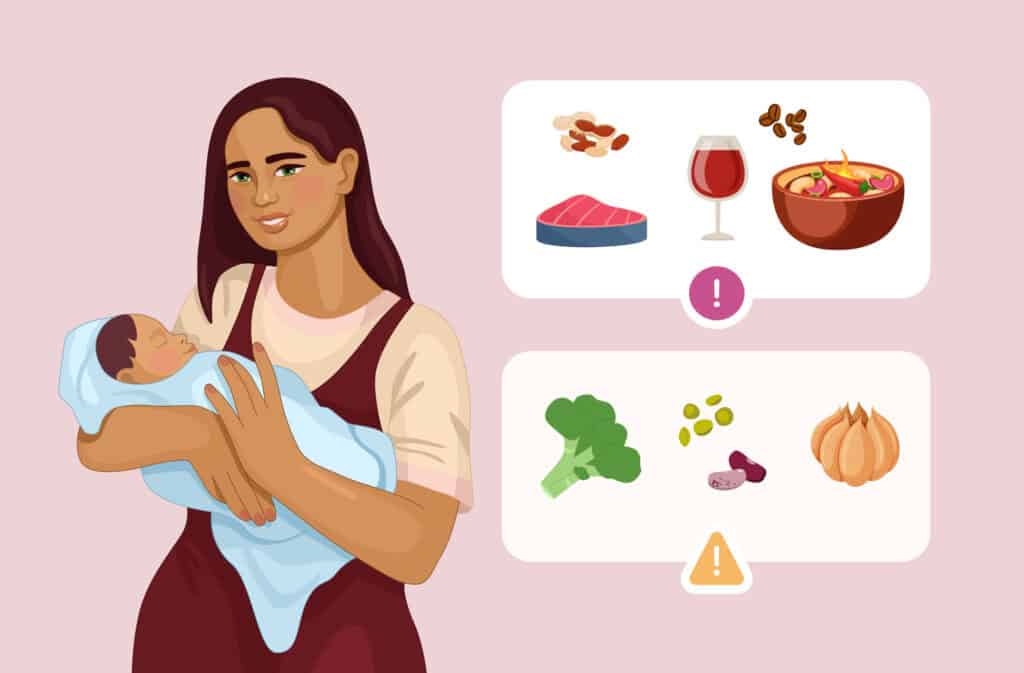
Your nutrition while lactating can upset your baby and impact your milk supply. Here is what not to eat while breastfeeding and what foods to incorporate into your diet.
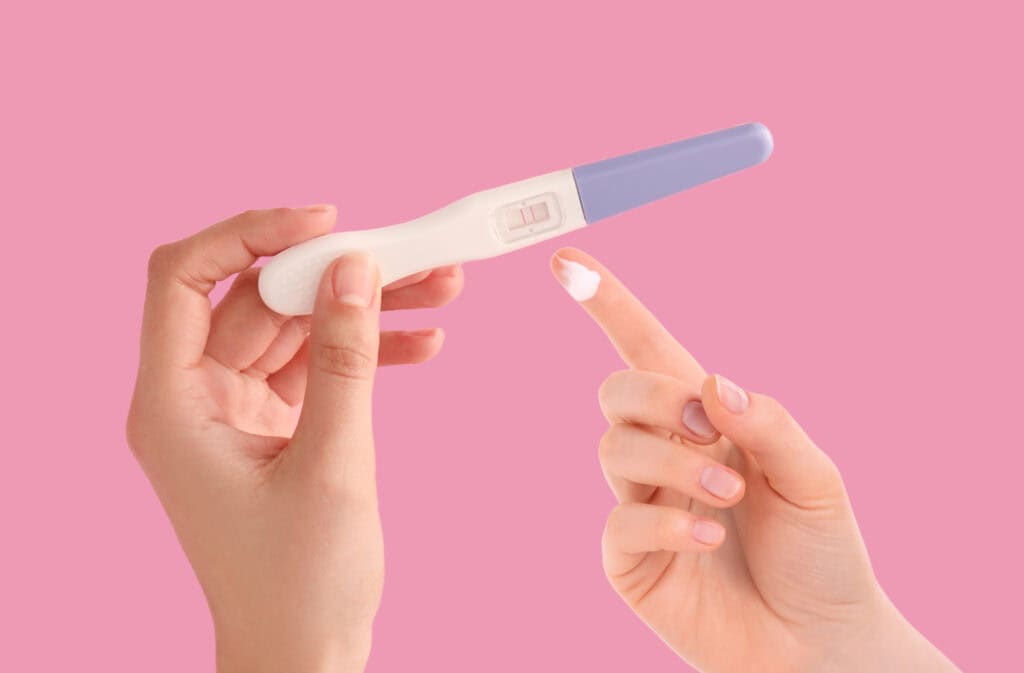
Learn how cervical mucus changes after ovulation if pregnant. Discover what discharge indicates early pregnancy and how to interpret signs to track conception success.

